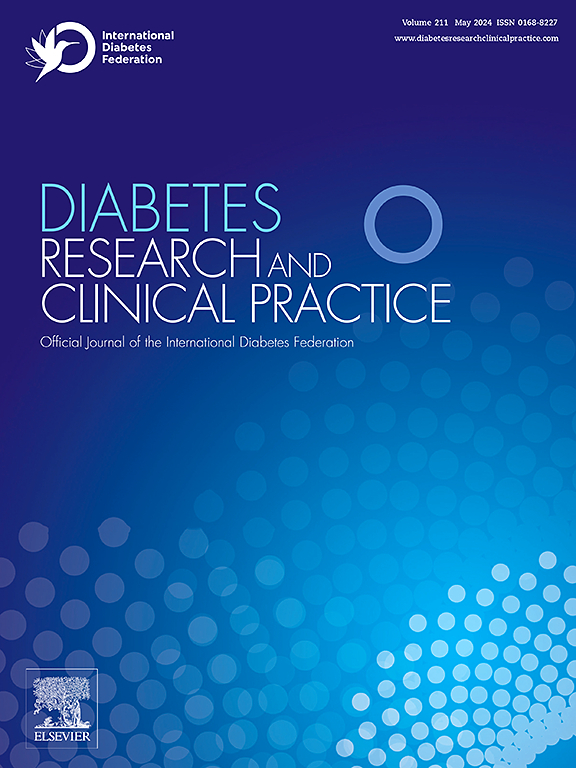SGLT2 inhibitors and nephrolithiasis risk in patients with type 2 diabetes: A cohort study and meta-analysis
IF 6.1
3区 医学
Q1 ENDOCRINOLOGY & METABOLISM
引用次数: 0
Abstract
Aims
This study aimed to evaluate the relationship between sodium-glucose cotransporter 2 inhibitor (SGLT2i) use and nephrolithiasis risk.
Methods
In this real-world cohort study, we analyzed electronic health records from the TriNetX Analytics Network, which includes patients from 64 U.S. healthcare organizations. Adult patients with type 2 diabetes (T2D) who initiated SGLT2is, dipeptidyl peptidase-4 inhibitors (DPP4is), or glucagon-like peptide-1 receptor agonists (GLP-1RAs) between January 2015 and December 2023 were included. Comparisons were made between SGLT2is and DPP4is and between SGLT2is and GLP-1RAs. Patients were followed-up for up to 5 years. A meta-analysis was further conducted to synthesize available evidence.
Results
The cohort study included 500,000 patients (250,000 pairs) for SGLT2is vs. DPP4is comparisons and 482,284 patients (241,142 pairs) for SGLT2is vs. GLP-1Ras comparisons. The risk of nephrolithiasis was significantly lower in SGLT2i users compared with DPP4i (HR: 0.86; 95% CI: 0.83–0.90) and GLP-1RA users (HR: 0.90; 95% CI: 0.86–0.94). A meta-analysis combining our study with four additional real-world studies further supported these findings.
Conclusions
This study suggests that SGLT2is may provide benefits beyond glycemic control by reducing nephrolithiasis risk, offering an advantage when selecting glucose-lowering therapies for patients with T2D.

求助全文
约1分钟内获得全文
求助全文
来源期刊

Diabetes research and clinical practice
医学-内分泌学与代谢
CiteScore
10.30
自引率
3.90%
发文量
862
审稿时长
32 days
期刊介绍:
Diabetes Research and Clinical Practice is an international journal for health-care providers and clinically oriented researchers that publishes high-quality original research articles and expert reviews in diabetes and related areas. The role of the journal is to provide a venue for dissemination of knowledge and discussion of topics related to diabetes clinical research and patient care. Topics of focus include translational science, genetics, immunology, nutrition, psychosocial research, epidemiology, prevention, socio-economic research, complications, new treatments, technologies and therapy.
 求助内容:
求助内容: 应助结果提醒方式:
应助结果提醒方式:


